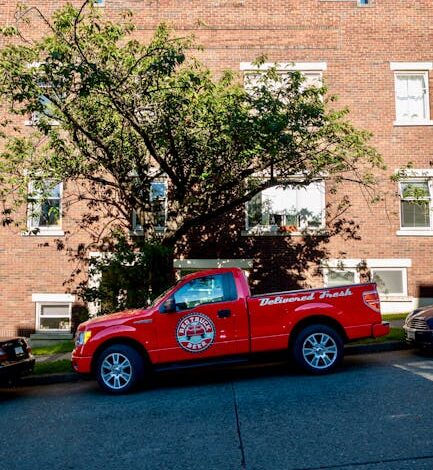The Growing Need for Consistent Lunar Cargo Transport

The Moon, once a distant dream, is rapidly transforming into a bustling frontier for science, commerce, and human exploration. As global interest in Earth’s closest celestial neighbor intensifies, the demand for reliable and frequent transportation to its surface has surged. Among the innovators leading this charge is Impulse Space, an in-space transportation company with ambitious plans to revolutionize lunar logistics. Their detailed strategy aims to deliver an astounding six tons of cargo to the Moon annually, marking a significant leap forward in our pursuit of a sustainable lunar presence.
This commitment to high-volume lunar delivery isn’t just a technical feat; it signifies a maturing space economy where regular freight services to the Moon are becoming a reality. From supporting scientific missions to laying the groundwork for future lunar outposts, the ability to transport substantial payloads is paramount. Impulse Space is positioning itself at the forefront of this emerging market, promising to bridge the gap between Earth-bound launches and the Moon’s challenging environment.
The Growing Need for Consistent Lunar Cargo Transport
For decades, lunar missions were characterized by sporadic, high-stakes endeavors. Today, however, the landscape is shifting dramatically. National space agencies like NASA, through its Artemis program, alongside private enterprises, are pursuing long-term objectives that require continuous resupply and infrastructure development on the Moon. This ambitious vision necessitates a robust supply chain capable of delivering everything from scientific instruments and rovers to habitat modules and life support systems.
Impulse Space sees a growing demand for mid-sized deliveries to the moon. This market segment, often overlooked by mega-launch providers focused on very large payloads or CubeSat aggregators handling tiny ones, is critical for building a sustainable lunar economy. Mid-sized payloads are the workhorses of lunar exploration, enabling a broad range of activities from geological surveys to resource prospecting and the establishment of communication networks.
The reliability and frequency of such a service are as important as the payload capacity itself. Operators need to know that their hardware will reach its destination on schedule and intact. Impulse Space’s detailed plan addresses this by focusing on efficient deep space missions and precise lunar lander capabilities, ensuring that vital lunar cargo can reliably make the journey from Earth orbit to the lunar surface.
Impulse Space’s Bold Plan for Lunar Delivery
At the heart of Impulse Space’s strategy is a blend of innovative in-space propulsion technology and meticulously planned orbital transfer vehicles. Their architecture is designed not just for a single mission, but for a consistent, high-cadence operation that can support multiple customers simultaneously. The target of six tons per year underscores their confidence in both their technical capabilities and the burgeoning market demand for lunar transport.
Their approach involves leveraging high-performance chemical propulsion systems to execute the complex maneuvers required for translunar injection and lunar orbit insertion. Once in lunar orbit, specialized transfer vehicles, like their Mira or Helios platforms, will be deployed to ferry payloads directly to the lunar surface. These vehicles are engineered for precision landings, crucial for delicate scientific equipment or sensitive components of a lunar base.
This dedicated lunar delivery service streamlines the process for clients, removing much of the logistical complexity and risk associated with proprietary lander development. By offering a standardized “freight forwarding” service to the Moon, Impulse Space enables a wider array of organizations—from research institutions to mining companies—to access the lunar environment without having to become space launch experts themselves.
Enabling a Future on the Moon
The ability to deliver up to six tons annually to the Moon is not merely an incremental improvement; it is a foundational capability for humanity’s expansion into cislunar space. Imagine the possibilities: continuous scientific experiments at the lunar poles, the deployment of advanced telescopes on the far side, or the establishment of semi-permanent human habitats capable of sustained research and resource utilization. Each of these endeavors relies heavily on a dependable supply chain.
Impulse Space’s commitment to such a significant lunar payload capacity means that larger, more robust equipment can be sent to the Moon. This includes heavier rovers, advanced power generation systems, and more substantial structures for protective habitats. By normalizing commercial lunar transport, they are actively reducing the barriers to entry for lunar exploration and development, fostering a more collaborative and dynamic space economy.
This regular cadence of lunar missions also creates opportunities for iterative development. Scientists and engineers can send updated instruments, test new technologies, and receive feedback from previous missions, accelerating the pace of innovation. It transforms the Moon from a destination for occasional visits into an accessible proving ground and potential outpost for humanity.
A New Frontier of Lunar Logistics
Impulse Space’s ambitious plan to deliver up to six tons a year to the Moon represents a pivotal moment in the development of commercial space. By addressing the critical need for reliable, mid-sized lunar cargo deliveries, they are not just transporting goods; they are paving the way for a more active, accessible, and ultimately, sustainable human presence on our celestial neighbor. As their detailed strategy unfolds, the future of lunar exploration looks brighter and more tangible than ever before. Keep an eye on the skies – and the companies making the Moon a regular destination.





